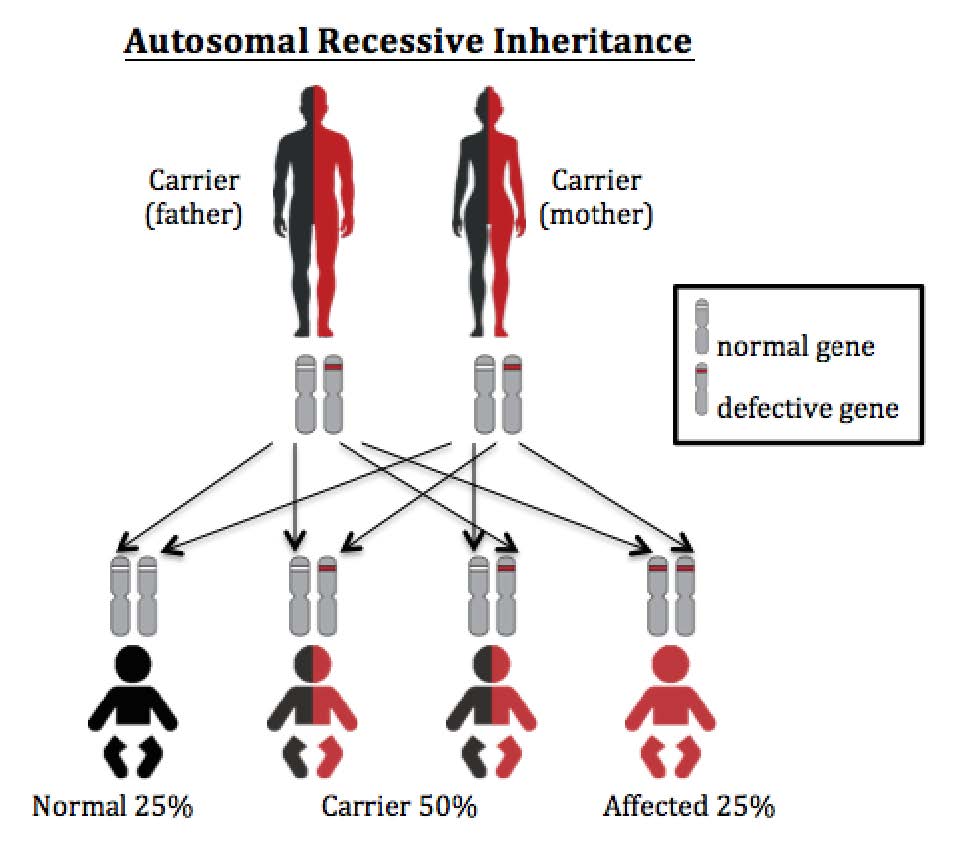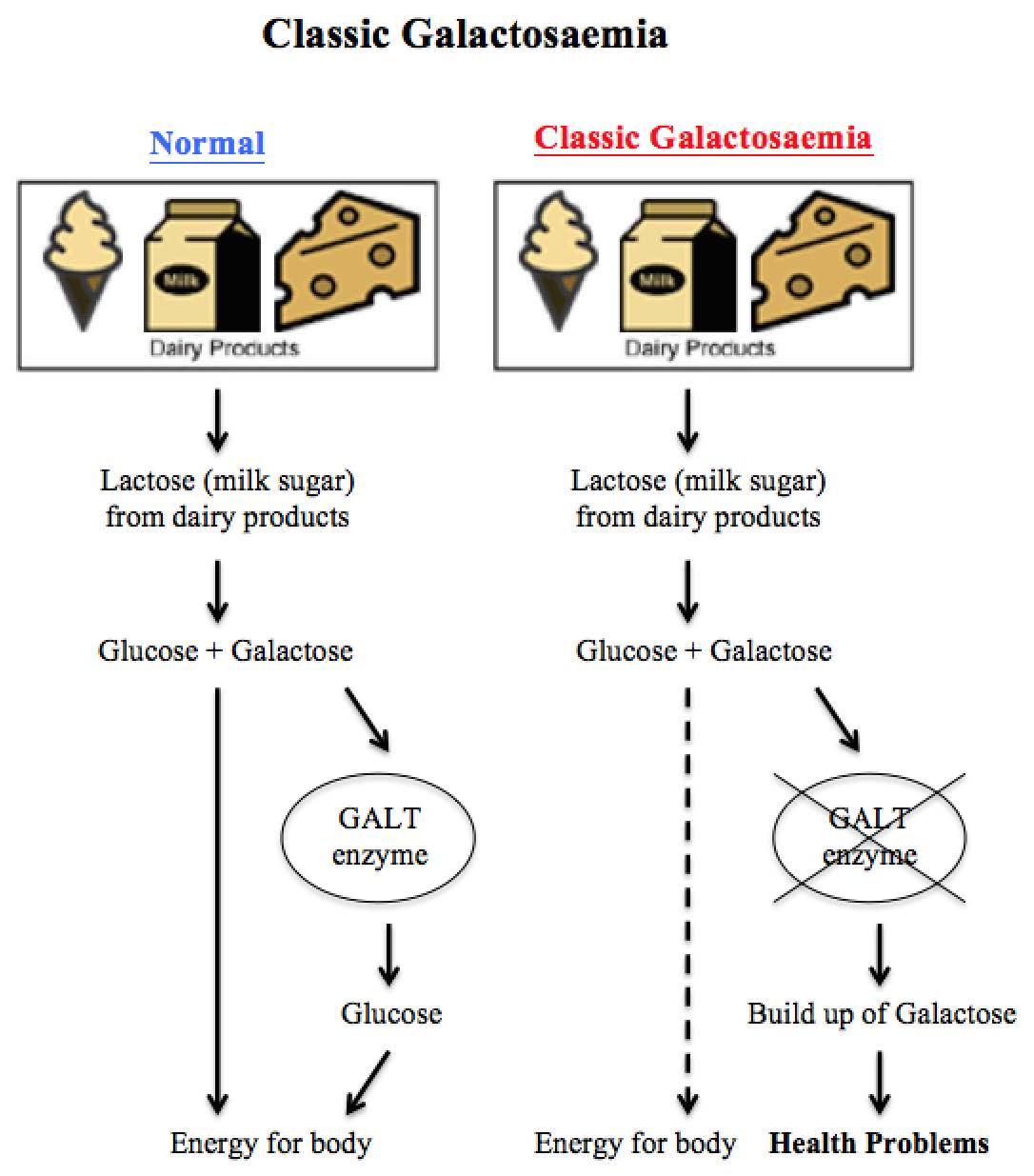
Classic galactosaemia is a condition that affects how the body breaks down a sugar called galactose.
Galactose is part of a larger sugar called lactose, and is found in all foods that contain milk. Children with classic galactosaemia lack an enzyme called ‘galactose-1-phosphate uridyl transferase' (GALT). Without the GALT enzyme, galactose cannot be broken down into glucose for the body to utilise for energy, and excess galactose builds up in parts of the body such as the brain, eyes, liver and kidneys.

The original graphic is converted into the following text version for your easy access to the information.
Classic Galactosaemia
Our body breaks down lactose (milk sugar) from dairy products into glucose and galactose when we eat. When functioning normally, our body will make GALT enzyme to break down galactose into glucose to produce energy for our body's use. In people with classic galactosaemia, the GALT enzyme is either missing or not working properly so galactose cannot be metabolized properly. As a result, galactose will build up in the body and cause serious health problems.
Everybody has two copies of genes, one from each parent, which tell the body how to make specific enzymes.
Classic galactosaemia is an autosomal recessive disease. Only when babies inherit two faulty copies of the gene for classic galactosaemia from parents, the enzyme made does not work properly or is not even made at all.

The original graphic is converted in to the following text version for your easy access to the information.
Autosomal recessive inheritance
In autosomal recessive diseases, people with two faulty copies of gene (one from father and one from mother) will develop symptoms. People with only one faulty copy of gene are normal and they are called disease carriers.
GALT is inherited in autosomal recessive manner. If both parents are GALT carriers, for each pregnancy (no matter it is a baby boy or girl), there is a 25% (1 in 4) chance that the child has 2 copies of normal gene (who is not affected), a 50% (1 in 2) chance that the child has one normal and one faulty gene who is a carrier like the parents, and a 25% (1 in 4) chance that the child has two copies of faulty gene who is at risk for GALT.
Babies with classic galactosaemia are usually healthy at birth. The signs and symptoms of classic galactosaemia can appear within a few days after birth.
Symptoms may vary from person to person. Affected children are at increased risk for early cataracts (clouding of the lens of the eye), intellectual disability and future reproductive problems.
Babies with classic galactosaemia benefit significantly from early treatment and can have healthy and active lives.
Doctors and dieticians will work together to give expert advice and care to the babies with classic galactosaemia. The goal of treatment is to prevent accumulation of undigested sugars in the blood.
The treatment for classic galactosaemia may include:
If you are worried that your baby is ill, it is important to follow medical advice. Bring your baby to your local accident and emergency department immediately. Take any information that you have been given about classic galactosaemia, including this pamphlet, to the hospital with you.
For general queries on Newborn Screening Programme for Inborn Errors of Metabolism, please call 5741 4280 (Department of Clinical Genetics, Hospital Authority)
July 2024
Hospital Authority